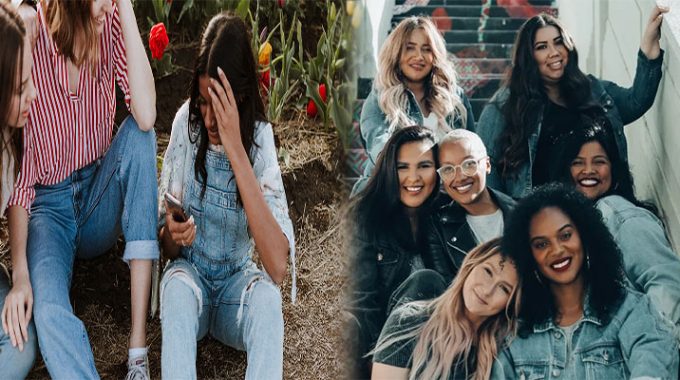As a person with a body that doesn’t fit into society’s standards for what a “normal” body looks like, I’ve had to learn about both body positivity and inclusivity. While these two terms might sound similar on the surface, they’re actually very different. People who are interested in getting involved with these movements need to understand these differences so that they can be an effective ally or advocate for those who struggle with their physical appearance.
A little less than a year ago, my body image was in a bad place.
A little less than a year ago, my body image was in a bad place. I felt like I was constantly being told that there was something wrong with the way I looked or how much space I took up. It wasn’t just strangers making comments–it was family members and friends too.
I’d been dealing with these feelings for so long that it became easier to just accept them as fact than try to fight against them. But then one day something clicked: if everyone else could see what was wrong with me, then surely there must be something wrong with them! After realizing this simple truth (and having some help from friends), I decided that no matter what anyone else thought about my body and its appearance, it would always be enough for me because it belongs entirely to me–and only me can decide whether or not it’s worthy of love and respect.”
I didn’t feel comfortable in my skin.
I didn’t feel comfortable in my skin. I didn’t like the way I looked, and I didn’t want to look at myself in the mirror. As a result of this lack of self-esteem, I felt like I wasn’t good enough or attractive enough for people around me–and that was extremely isolating.
I now know that these feelings are common among many other people who have struggled with body image issues as well as those who haven’t experienced them firsthand but still seek greater understanding about what it means when someone says they’re struggling with their own self-perception.
It took me some time to figure out how to get back on my feet and feel confident in myself again.
It took me some time to figure out how to get back on my feet and feel confident in myself again. I had to accept that I was going through a hard time, and that it would take some time for things to get better. Once I accepted this fact, I could start working on loving myself again.
I started by looking at myself in the mirror every day while telling myself positive things about myself: “You look beautiful!,” “I love your eyes!,” etc… This helped me start feeling good about who I am as a person and what makes up my identity (which includes more than just my body).
A big part of that process was learning about body positivity and inclusivity.
Body positivity is a movement that encourages people to accept and love their bodies, regardless of size or shape. Inclusivity refers to the idea that everyone deserves fair treatment and equal access regardless of gender identity or expression, race, sexual orientation, religion (or lack thereof), ability level or any other personal characteristic.
Inclusivity and body positivity are important because they help us understand what it means to be human–we’re all different from each other in some way! A person who doesn’t experience racism may not understand why someone would feel uncomfortable using a certain bathroom at school; on the other hand, if you’re white but have friends who aren’t white then you might find yourself feeling like there’s something wrong with them for being upset about racial profiling by police officers when driving through neighborhoods where most residents aren’t white themselves…and so forth for any number of characteristics which could lead us into conflict with our peers if we don’t recognize how these differences affect others’ experiences.
But there are so many different aspects of it that can be difficult to understand at first.
There are so many different aspects of body positivity and inclusivity. It can be hard to understand at first, but it’s important to have an understanding of the different aspects in order to be a good ally and help others who may not know as much about it.
When it comes to body positivity and inclusivity, there are many terms that you need to know to get involved effectively
Body positivity is a movement that promotes self-love and acceptance. It’s not about being skinny or fat; it’s about feeling good about yourself, no matter what size you are. Body shaming is when someone makes comments that make another person feel bad about their body, such as saying they should lose weight or calling them names like “fat” or “chubby.” The opposite of body shaming is body positivity–and it’s something we all need more of in our lives!
Body Image: How I Learned To Love Myself
What Is Body Positivity? – Definition & Examples
Body Positivity For Teens – Why It Matters & How To Be Part Of The Movement
I hope that this article has helped you understand some of the basics of body positivity and inclusivity. If you’re looking for more information on these topics, I highly recommend checking out some of the resources listed below. They’ll give you a better idea of what it means to be inclusive as well as how we can all work together towards a more positive future for everyone!














